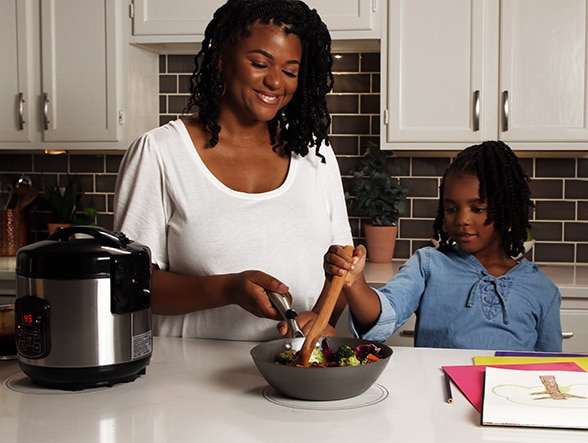
NFC connectivity is to play a major role in the delivery of a new generation of cordless kitchen appliances which work in conjunction with wireless power transmitter hotspots built into kitchen work surfaces to replace the need for traditional plugs and cables.
The new Ki Cordless Kitchen standard is being developed by the Wireless Power Consortium (WPC), the organization behind the development of the Qi wireless charging standard for smartphones and mobile devices.
The new standard “defines transmitters and versatile cooktops that wirelessly deliver up to 2200 watts of power to smart cordless kitchen appliances — allowing them to operate without the clutter of cords,” the consortium says.
“These small appliances, such as rice cookers, toaster, blenders, coffee makers, air fryers and more, are powered by simply placing them over power transmitters installed in enabled induction cooktops or neatly hidden beneath any standard non-metal countertop surface, cooktop or table.
“The appliances are then powered by inductive power transfer with no cords to get in the way.”
Smart features
“Communication between the Ki Cordless Kitchen appliance and transmitter is based on NFC,” says the WPC. “The communication begins as soon as the appliance is placed on the transmitter. In addition to controlling the amount of power that is transferred, the communication enables ‘smart’ features, such as allowing the transmitter to distinguish between Ki Cordless Kitchen appliances and other objects that should not be inadvertently heated, such as keys, phones, bank cards or other items.”
“This not only prevents items from being damaged or heated, but also allows for flexible use of kitchen space, as the same counter space can be used for food preparation, cooking, eating or even reading the newspaper.
“Without the hassle of the power cord, appliances can be easily stored when not in use, creating a clean, modern and uncluttered look and feel to the kitchen,” the consortium explains.
A video shows how a Ki-enabled cordless kitchen will work in practice:
“Ultimately, the Ki Cordless Kitchen standard will change the way we interact with our kitchens,” says Hans Kablau, chair of the WPC’s Kitchen Work Group. “With Ki Cordless Kitchen, consumers will experience an unprecedented convenience in their kitchens that they won’t want to live without.”
Next: Visit the NFCW Expo to find new suppliers and solutions